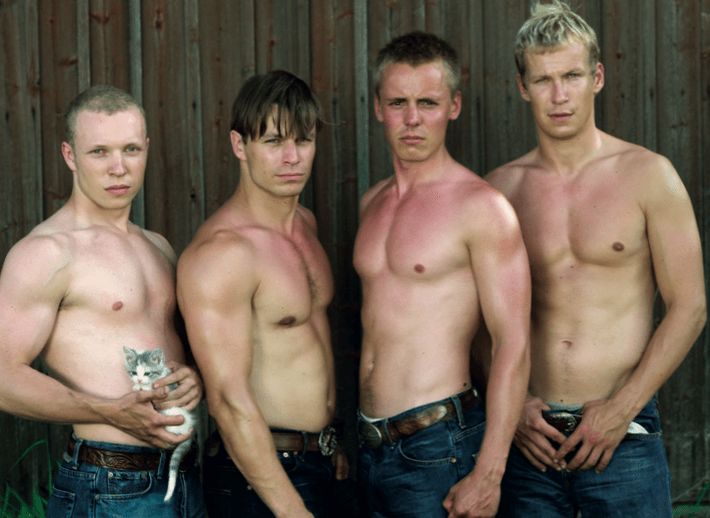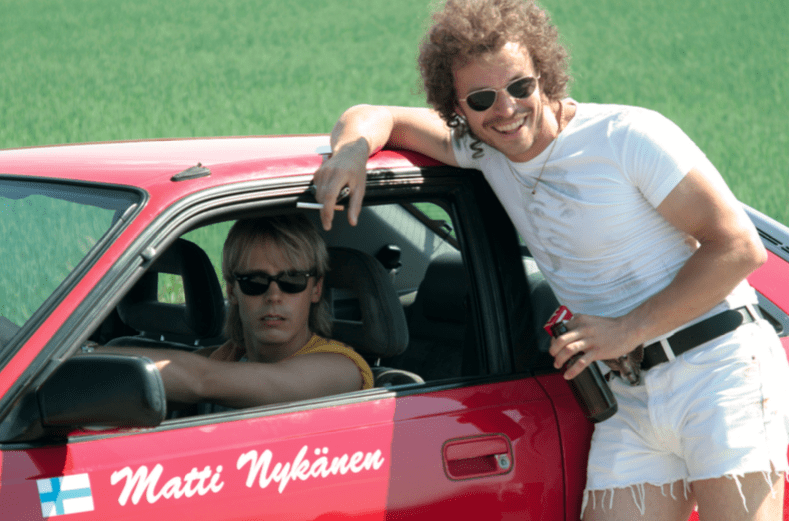The Finnish Dream
Kalle Kinnunen is a freelance journalist, who contributes regularly to eg. Suomen Kuvalehti, Image, STT and Filmihullu. His online writer’s blog, on the webpage of Suomen Kuvalehti, was chosen among the 10 best blogs in Finland by Helsingin Sanomat monthly supplement in December 2013. Kinnunen’s first book “Big Game – how Hollywood came to Finland” will be published by Johnny Kniga in April 2015.
The rise of the new Finnish cinema began in the winter of 1999. Solar Films was a key factor in that and soon, the most important individual production house. Now, when the company celebrates its 20th birthday, it is a self-evident institution.
Solar even has its own slots in the annual calendar of premieres; the Epiphany week, the first Friday of September. But, there is not a one singular Solar mold. In my opinion, during the last two decades Solar has produced some of the best domestic movies ever – and also those who’s only virtues are the box office revenues.
When someone claims that a contemporary, modern movie can’t draw large audiences in Finland, my standard argument used to “Frozen Land”, for a long time. An undeniable example of a work of art that is challenging, artistically successful and also, a major commercial hit.
Seven years later there are two examples. The other one is “Purge”. Besides the fact that these two hit movies don’t treat the audiences with kid gloves, there is only one other common factor between them; they are both Solar Films productions.
The most successful Finnish production company has been accused of populism; on the other hand, the same company has produced “Frozen Land”. It has been criticized of patriarchalism; although many of the Solar movies have been written and directed by women. On the other hand, Solar Films has taken the Finnish cinema to the Arena Age. That has happened literally, as they have organized big gala premieres in Turku and Oulu in the style of major sports events.
True enough – but also untrue, when it comes to Solar.
The combined annual audiences of Solar and its subsidiary, Bronson, have been in the region of half a million or over, and that will most likely be the case also this year. Solar has made movies that attract audiences in the rural areas, in the urban surroundings and even movies that prove that there is some sort of common culture still left in Finland. The half a million people who saw “The Grump” prove this to be true.
The secret is exactly this; should the movie have been made by anyone else, most likely it would have not have included those versatile ingredients that appeal to so many different types of spectators, already in the pre-production stage. When Dome Karukoski, known for completely different genres, was chosen to direct the popular topic by Tuomas Kyrö, the interpretation took a new direction and draw the fragmented Finnish audiences closer to each other.
As I was doing my background research for this article, I found out that very little analysis and research has been made of Solar. This is a bit odd – because popular cinema captures the zeitgeist better than any other art form.
615 000 spectators is an amount still not surmounted.
2012 saw seven Solar Films premieres, all feature films. Is that an exceptional amount?
It is a very exceptional amount.
The last time one production company has produced so many movies in one year, was 1962; Toivo Särkkä and Suomen Filmiteollisuus.
1962 was the end of the golden era of the Finnish cinema. The birth of television and the actor’s strike killed the “Hollywood of Finland”.

Successful movies and good movies have been made in Finland after that, no doubt – but in 1990’s the situation was critical. The rock bottom was 1994, when the percentage of the viewers of domestic movies was down to 4 per cent.
The change was a surprise to everyone. In 1999, the share of domestic audiences skyrocketed to 25 per cent. The young filmmakers were writing and directing fresh movies, restoring the faith to the Finnish cinema. A lot of these milestones were produced by Solar Films; “The Tough Ones”, “Restless”,” Me and Morrison”…
“Bad Boys” was the pinnacle of the upswing. 615 000 spectators is an amount still not surmounted. It is a very relevant question, if a domestic movie will ever attract so many viewers.
Behind the change there was talent, a nose for business and above all, a very powerful production company.
An essay in The Finnish National Filmography, “Finnish Movie Productions 2000-2009” tells us about it:
“Spiritually the turning point that happened in the 1990’s and 2000’s can be described as the change of focus, from the movie of the filmmakers to the movie of the producer. The director-producers who saw themselves as artists, were replaced by professional movie producers of the next generation. They were not shy to be openly commercial; flashy marketing campaigns, productization, sponsoring and product placement became familiar terms. Even for the mass media, films were no more merely an art form, but also an industry that employs filmmaking professionals. But the turning point didn’t happen without conflicts; some filmmakers felt that in the new surroundings they were left with a role to only implement the producer’s wishes. The oddness of the new situation can be seen in the various copyright and final cut arguments that we saw in the 2000’s – that sometimes lead even to courtcases between the filmmakers and the producers.”
The essay is written in regard of all domestic productions of the decade, but it could have been written about Solar Films alone. Of all the drama movies of that era, the share of Solar was over 10 %. Out of the ten most watched movies of that period, five were Solar movies, and three of them were directed by Aleksi Mäkelä.
And of course it had to be Solar, publishing the first domestic movie in the DVD format – it was “The Tough Ones” in 1999.
A Vares movie is a safe choice, just like a hamburger (from Turku).
Solar was a phenomenon; it was in the headlines because of its successes and its arguments. The editing wars of “Frozen Land” before the premiere wouldn’t have been in the news, if the movie hadn’t drawn so much interest from the media and the audience already in advance.
The popularity of the movies confirms it: Solar Films has captured the zeitgeist. You can reach that in good and bad. The values depend on your point of view, but the thirty-or-so movies of the production company are a part of the recent history of Finnish culture, permanently.
The screen debut of Aku Louhimies, “Restless”, was something unexpected. It brought the urban youth and young adults to movie theaters, to watch domestic cinema. With a few exceptions, Finnish cinema had lost the trust of this target audience at least one generation earlier.
Although “Restless” didn’t mean anything to me, I can’t deny the fact that it triggered an evolution that gave the next generation of filmmakers the possibility to be original and unique.
Vares was graphic in its violence; it was simultaneously a comical detective story – something that had not been done in Finland before. That also pleased the nation – so much, that eight sequels have been made. The witty Jussi Vares has become the pulp-detective-Uuno of the modern ages: he easily skates past the danger zones and returns to his pint of beer. A Vares movie is a safe choice, just like a hamburger (from Turku).
The moral judgement of Matti (Hell is for Heroes) gave some critics headaches.
“A humorless critic fears that the voyeuristic movie that downplays and underestimates everything possible – from drunk driving to family violence – is getting to be considered as the historical truth, and something that straightens out the old-fashioned legal values of our times, in a popular way. That thunderstruck bypassed the other possible virtues of the movie”, contemplated Arto Pajukallio in Helsingin Sanomat when the movie was aired on TV, taking some distance.
Markus Selin is a bad boy, but he’s not a grump.
You can’t underestimate the importance of cinema – an immensely popular media – and its power to affect opinions and images. Fiction becomes a part of the national identity. Solar has made several movies which accomplish that task. Those mutual images and movies are not to everyone’s liking, but the essential part of popular culture is above all the fact that you can’t direct it from above. A popular movie reflects the existing feelings; it tells something essential about its own time.

The real Matti, the character of the movie and the person we know from the evening papers – they are all different persons – but they all are a part of the Finnish culture.
Altough the Lordi horror movie “Dark Floors”, produced in the craze of the Eurovision victory and aimed to the international markets, sounded like a doomed attempt (with its never-heard-of-English-speaking actors) – it was made in all seriousness and with a relatively large budget. Taking risks of this magnitude is something that only a strong company like Solar can do.
Along with many other fellow critics, I was also wondering why “Hellsinki” was flirting with the farce genre – although the original text by Harri Nykänen and the existing reality could’ve offered the ingredients for a completely different movie – even for a Finnish cousin of Goodfellas or a crime epoque film of that kind.
An audience of 257 000 tells us, that quite a few liked the style the filmmakers chose.
Markus Selin is a bad boy, but he’s not a grump.
The long-time CEO of the company is Jukka Helle, but Solar is personified to its founder Markus Selin, a multisectoral entrepreneur. To the best of my knowledge, he is the only movie producer in the world who keeps on hammering domestic box office champions, year after – and sports two Super Mario tattoos on his skin.
As a critic, it gives me pleasure so see the easy-going attitude of the Solar family towards the criticism of their movies.
His public image is Godfatherlike, mystical, masculine. At least at the early stages of Solar, he did nothing to get rid of that picture.
First time I spoke to him outside formal occasions was when I went to shoot the breeze with him in a nightclub. The year was cirka 2001 and I was drunk, needless to say. But I remember well how friendly he was. We almost talked shop.
“The dogs bark but the caravan goes on”, said Selin, when my narcissistic babble turned into one of my negative reviews. And that was the end of that.
As a critic, it gives me pleasure so see the easy-going attitude of the Solar family towards the criticism of their movies. From the moviemakers point of view, the reviews are like forces of the nature – something you just have to live with. And you don’t necessarily have to worry about them too much, because the public opinion is usually a completely different thing.
Back in the day, when I was asking the movie circles questions about Solar, I was expecting stories of macho debauchery. But mostly, I heard praise about a production company where the salaries are never late, unlike in several other firms. That was more than a decade ago and the Finnish film trade has taken many steps forward since, but Solar has managed to maintain its strong position.
In 2005, I was planning a documentary about Selin’s first movie “Born American”, together with a friend of mine. I arrived at their brand new office with a humble attitude; I was afraid that Selin would regard my amateurish project as a waste of time. But he was positive and trusting and I was surprised to find out that the man wasn’t an angry “Don Markus” – but a laidback dude, who signs his e-mails “masionly”.
The document wasn’t made – but some sort of trust was born between us and is still alive.
Masionly never lies – but as a judge of human nature, he’s a fox. After talking with him about something, for a long time, I always think afterwards; have I just been manipulated? It is a similar feeling than after a good movie. And the metaphore is not a joke. Cinema is an art of manipulation.
I have heard an estimate that the kitten in Lauri Nurkse’s lap on the poster of “Bad Boys” brought the movie 200 000 additional spectators more than it would’ve got otherwise. The cat sold the macho movie to young girls.
The marketing know-how of Solar Films is worth a chapter of its own – or a whole book. For example, the 500 000 euro marketing contract with Expert (a chain of household appliance stores) was almost incomprehensible news back in the day. The trade magazines were writing about million-category deals.
Helena Ylänen wrote to Helsingin Sanomat at the time: “The Finnish cinema is about to move from squirrel pelt bartering to market economy”.
Now we are talking about the self-esteem of the whole Finnish film industry.
Solar is well aware of its own strengths. In a contradictory way, I have always admired justified arrogance – and that is exactly what Solar has represented, both in the media and in the real life. Masionly told me a humorous story about a phone call he got from a competing producer. During the times of “Hell is for Heroes”, there was another sports movie in the making. A producer called him, longing after joint marketing efforts between the movies. Selin said to the producer: “You have called a completely wrong number”.
Behind the scenes is a man called Rampe Toivonen, a super expert in all marketing. He is one of the smartest and most businesslike persons in the film industry. He keeps a low profile, Selin doesn’t.
The critics have not taken Solar into their arms – although some of their individual movies have been praised.

Maybe it is because of the arrogant attitude that jumps to people’s minds, when someone mentions Markus Selin & company. Marketing know-how seems to be somehow suspicious.
In a philosophy like this, artistic failures are the producer’s fault, brought together by the name of the production company – and the successes have happened despite the producer and his potential skills.
The views of a movie producer and a critic, about the qualities of a good movie, are fundamentally different.
To the producer, economical gain is an inevitable mark of a successful movie.
A critic, on the other hand, doesn’t buy the reasoning that good box office makes a better movie. To a critic, a bad movie doesn’t become useful despite the fact that it might sell 300 000 admissions and help the smaller movie theaters to survive – the theaters where domestic hits and James Bond strike gold. If only economical terms are taken into account, the most remarkable domestic movie of the last 50 years is “Uuno Turhapuro in the Army”.
The success of one, individual movie is not a binding proof of quality – but when we are talking about a whole movie culture, ticket sales start to count. “Bad Boys”, “Hell is for Heroes” and “Hellsinki” didn’t get the best possible reviews – but in fact, they have kept some small theaters alive.
The roughest juxtapositions can be found in the circles, where the participants claim to be cinefiles. In those circles, success is a curse.
To “Filmihullu”, a Finnish trade magazine with its 60’s attitudes, Solar Films almost equals the absolute evil. Their rhetorics are often of the almost-unprintable-kind.
The editor-in-chief of Filmihullu, Lauri Timonen, wrote four years ago: “Markus Selin is munching a Danish pastry, with his filthy ponytail almost touching his ass crack” – at the same time when the fictional but real filmmakers “can’t even afford to refuel their cars, to get to the locations”.
After this fantasy, the editor doomed the 7 days magazine, a TV talk show – and then wrote a pious comment about hypocrisy.
On the other hand, “Frozen Land” made the cover and the editorial of the very same magazine.
What do we critics know?
“Hellsinki is completely predictable, all the time. I sincerely wonder why does it appeal to the audiences?”, wrote Leena Virtanen to Helsingin Sanomat, when the movie was first aired on TV.
Yes, why?
“If a movie is not entertainment, what is it? A punishment?”, wrote the most known movie critic of her time, Pauline Kael of New Yorker.
The digitalization created a strong upswing to the spectator numbers of Finnish cinema, starting at the end of the last decade. But the eternal riddle, if a movie will be a hit or a flop, is never answered before the premiere.
“To be able to find and reach the target audience beforehand – that is a science that doesn’t exist. No one can foretell the future”, said Selin in an Yle interview in 2005.
As the producer and Hollywood author William Goldman has said, in the film industry: “Nobody knows anything”.
The origin of the “think big-ethos” in the Finnish cinema is Solar Films. They soon reach the magic milestone of 5 million spectators. Most likely the most expensive Finnish movies “Iron Sky” and “Big Game” would not have been made, if someone hadn’t led the way in the domestic markets first.
But you can’t always win.
“A producer must take an economical risk. Otherwise he can’t call himself a producer”, said Selin in an interview by Helsingin Sanomat, in 2009.
“Purge” didn’t really take Solar from the national level to the international, like it was supposed to.
The big Kalevala trilogy is on ice.
As I was going through the articles about Solar Films from different newspapers and magazines, through the years, I noticed that one movie has had way more exposure than any others. “Mannerheim” still hasn’t seen the light of day.
It’s a paradox that the movies that haven’t been made, are the signs of arrogance that can be used against you in public, much easier than the ones that have been made. After the premiere, a movie is either successful – a sign of the public acceptance – or a flop, when the economical failures are punishing enough. But the unmade ones lurk around, like a monkey in your back.
It’s unlikely that there is a another film that has become so significant, without actually shooting one frame of it.
Solar has made a heavy movie, a youth movie, a children’s movie and, for example, more detective movies than any other Finnish production company, during the history of cinema.
Solar has combined the American style marketing philosophies and the PR know-how with a fast moving European production form. That makes the Finnish dream come true; the fiction of that dream is reality; Nykänen, Lordi, Reijo Mäki and his Turku.
I was writing an article to “Suomen Kuvalehti” in the fall of 2014; the topic was the challenges of the Finnish moviemaking. One male producer, approaching middle age, was summarizing the problem with the topics in a very epitomizing way: because the clear majority of domestic producers are middle-aged men, the movies are made about topics that interest middle-aged men.
True enough – but also untrue, when it comes to Solar.
A proof of Solar’s large scale is “Robin” – but also the personal, original and feministic movies by Marja Pyykkö (“Run, Sister, Run” and “Village People”). Solar has made a heavy movie, a youth movie, a children’s movie and, for example, more detective movies than any other Finnish production company, during the history of cinema. The first surprise hit of Solar was an erotic drama and the latest (when I write this) tells about an old man in the boonies and his son.
Last time I visited their office, conducting an interview, Selin said in candor that he doesn’t have a clue how their next movie will fare. The premiere was only in a few days and the only thing he could do was guessing.
I understood the challenge.
The movie was “Summertime”, produced by Bronson, a subsidiary of Solar. A story of young chicks, partying hard in Hanko. Masionly is a middle-aged dude, taking it pretty easy in his domestic Nummela.
I didn’t like the movie very much – but thought that the target audience would.
And they did.




